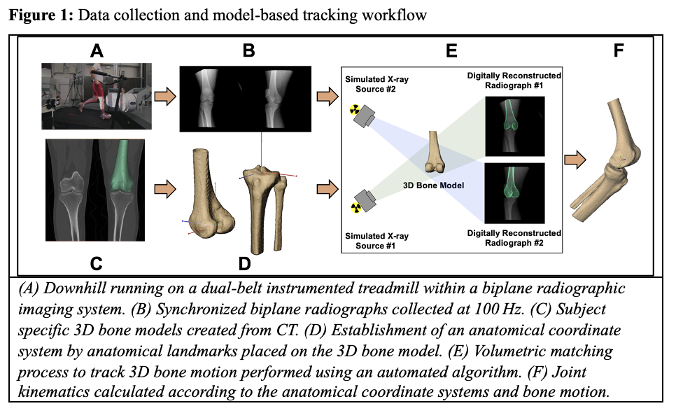German Congress of Orthopaedics and Traumatology (DKOU 2025)
Deutscher Kongress für Orthopädie und Unfallchirurgie 2025 (DKOU 2025)
Dynamic knee kinematics during downhill running 10+ years after anatomic ACL reconstruction
2Department of Sports Orthopaedics, Technical University of Munich, Munich, Deutschland
3Department of Mechanical Engineering and Material Science, University of Pittsburgh, Pittsburgh, USA
4Department of Orthopaedic Surgery, Kobe University Graduate School of Medicine, Kobe, Japan
5Department of Physical Therapie, UPMC Freddie Fu Sports Medicine Center, University of Pittsburgh, Pittsburgh, USA
Text
Objectives and questions: Substantial evidence from biomechanical studies shows that anterior cruciate ligament reconstruction (ACLR) improves anterior-posterior (AP) and rotatory stability. However, previous in-vivo studies have reported that ACLR fails to fully restore physiological kinematics within 24 months, leaving unclear how knee kinematics are affected in the long term. This study aims to investigate knee kinematics after ACLR with quadriceps autograft, utilizing dynamic biplane radiography at a minimum of 10-year follow-up.
Material and methods: This study enrolled patients from a previous randomized controlled trial in which patients underwent primary ACLR with a quadriceps tendon (QT) autograft. In vivo knee kinematics were previously measured at 6 and 24 months postoperatively. Exclusion criteria for the current study included ACLR revision surgery and knee arthroplasty. At a minimum of 10-year follow-up, synchronized biplane radiographs were obtained in the same laboratory. Participants performed downhill running at 3 m/s. Volumetric and surface models of the femur and tibia were obtained by segmentation of CT scans (Mimics, Materialize, Inc.). A validated model-based tracking system was used for three-dimensional (3D) positioning and orientation of the bones, allowing the calculation of 3D motions. Analyzed kinematic parameters were tibiofemoral flexion, rotation, abduction, and AP translation in the first 70% of stance phase. Statistical Parametric Mapping was utilized for comparing continuous kinematic data at different time points within the surgical knee and between limbs at the latest follow-up. Clinical outcome parameters collected included the International Knee Documentation Committee Subjective Knee Form (IKDC SKF).
Results: Nine subjects of the initial randomized controlled trial have been tested (mean age 27.4 ± 9.7 years; 2 female) at a follow-up of 12.6 ± 0.5 years. Within the surgical knee, AP translation of the tibia relative to the femur was affected by follow-up time from 9% stance on, with differences observed between the 6-month to the 24-months follow-up and between the 6-months to the 10+ year follow-up. No differences were detected between the 24-month and 10+ years. Compared with the contralateral knee, the surgical side tibia was less internally rotated at 10+ years follow-up. Mean IKDC SKF at the latest follow-up was 85.7 ± 14.7.
Discussion and conclusions: There was no detectable change in knee kinematics in the surgical knee from 24-months to long-term follow-up after anatomic ACLR with a quadricep tendon autograft in this cohort. Internal-external tibial rotation may be the most likely kinematics target for restoring native knee kinematics long term after ACLR.
Figure 1 [Abb. 1]





